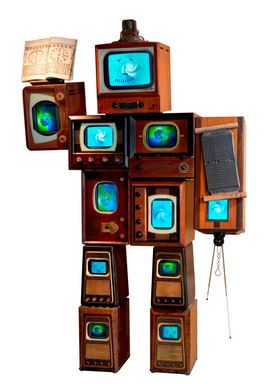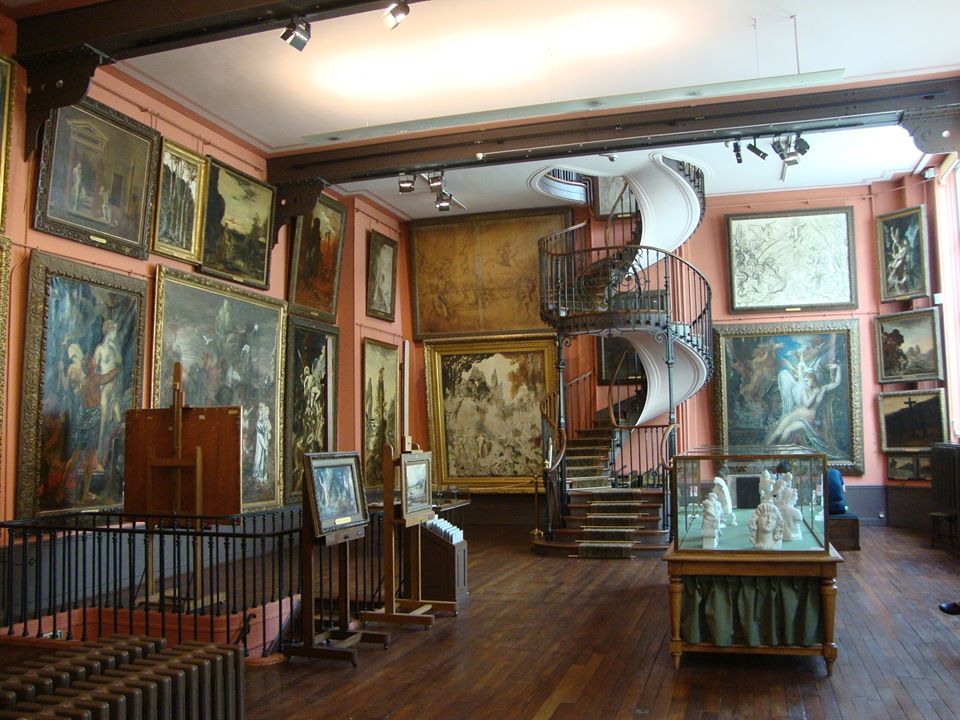When we visit our favorite art museums, we’ve gotten pretty casual about our expectations. Of course our favorite pieces of art will be there…properly presented…perfectly maintained…carefully preserved. The Mona Lisa is always at the Louvre (albeit you have to look around 500 other heads and selfie takers), the Impressionists are all at the d’Orsay or the Art Institute of Chicago, and of course David is in the Accademia in Florence!
But we forget how lucky we truly are. Not only have these works literally survived for centuries on their own, some of them have survived vandals and thieves as well. And sometimes it takes something like the fire at Notre Dame Cathedral in Paris to remind us of how lucky we are.
But there is more to luck than simply luck. We are also lucky that museums, collectors, and other institutions have trained and retained conservators over those centuries. Professionals who can repair flaking paint, replace darkened glazes, strip smoke and soot from frescos, and on occasion repair fire or flood or vandalism damage.
But we are talking about traditional materials. And when they have completed their work, we accept that the artwork is still the work of the master even though we know that there has been more recent intervention.
From the 19th Century and primarily in the 20th Century (and into the current periods), technology has introduced a myriad of new innovations…materials for lack of a better word…time base media…essentially film, video, audio, recordings, and of course photography and slides. And artists from that time to this have adopted those new media as art media or adapted them into their otherwise more traditional offerings. So that now brings to mind, are we training conservators to think about how they will conserve ‘modern artifacts’ as the technologies change and morph in the coming centuries.
Why am I thinking about this? Well as I approach my 70th birthday, I realize that just in the realm of commercial music, there has been the move from 78s to 45s to LPs to CDs to digital to streaming to ???. Not to mention the sidebar of reel to reel tape and 8-tracks and cassettes. So it is easily assumed that time based media are going to continue to change and ‘improve’ as we move forward. And that has certainly happened already as I’ll discuss as we go along here.
But we also realize that there has been a fairly vigorous discussion around the sound quality and atmosphere surrounding the music as we’ve made these advances. Particularly the move from LPs to CDs. Despite their hiss and pop, LPs are held to be warmer and more accessible, while CDs, though often clearer, are considered to be colder. And often, for commercial rather than artistic aims, the music is remastered for the newer technologies…CDs…to other digital…to streaming. Not always from the original master recordings and not always with input from the artist. So are these recordings true to the artist’s vision?
This originally occurred to me maybe a dozen years ago while visiting an MFA show at the University of Wisconsin Milwaukee. One of the graduates was exhibiting in installation that included images projected on a backdrop of gauze. I don’t remember if the images were slides or a short film, but I wondered out loud what would happen to art like this and could they conserve this stuff in the future. A prominent Milwaukee artist who was standing nearby was sure that they would… but will they? And will it be the same?
In the past year, I have attended two shows that included films created by the artist. The first one was the Milwaukee Art Museum Show: Nares Moves, which I responded to here, and the Art Institute of Chicago’s: Andy Warhol – From A to B and Back Again.
Let’s start with the Warhol. In one of the galleries, a pair of Warhol short movies were running side by side in the darkened room. They were projected from on high from the back wall onto the front gallery wall. Near the ceiling on the projection wall, two old film projectors were clacking away but I don’t think they were the actual mechanisms projecting the movies. I think that we were seeing digital versions being projected with the mid-20th Century projectors there for atmosphere and that familiar (at least to us coming from the mid-20th C experience) clackety clack of the running projector. I should have paid more attention to how these films were being presented.
The Nares exhibition featured a number of James Nares short films. And the identity tags clearly stated that they had already been converted from film to digital.
So, contemporary art institutions have moved reel film one generation or so up the path in conservation. Can they continue to do that as ‘improvements’ in technology appear and what does it really mean for the art?
In our current mindset, when we see a painting that has had the glaze restored or flaking paint replaced or repainted, we still accept that the work is from the hand of the original artist. And I guess that it is. But as we move from what to today’s eye is a fairly primitive technology like film to cleaner more modern digital media are we still seeing the vision of the artist when the original was conceived and created? Andy Warhol certainly took into account the flicker and noise and grain and attendant scratches when he put together his originals. Sometimes he played with them and featured them. What would he think of the conversions to modern digital? What would he or any artists sense be if conservators ‘cleaned’ up the images and sound as they upgrade the media (I am ignoring commercial media here…as long as Hollywood films or mass media music remains a viable source of revenue they will be modified and upgraded at will)?
So were those Nares and Warhol films on display in 2019, in digital form, true to the vision of the artist? I don’t have a clear answer for that.
But let’s look at another example that may prove even more problematic: Nam June Paik. Mr. Paik is recognized as the creator of video art…and he used it in every possible aspect as art. From sculptures consisting of televisions, to manipulating the abstract images on the screen, to applying magnets to the picture tubes to distort the image, to utilizing Sony’s new video tape technology, to including TVs in clothing and musical instruments, to interactive video presentations, to just about anything video.

Now, anything that Mr. Paik recorded would have the same issues as those I mentioned about for Mr. Warhol and Jamie Nares. As his existing videos are upgraded to newer digital formats, are they the same works as envisioned by the artist? Of have they lost some of his hand? And is the art the image or is it the whole experience? The clatter of earlier projectors? The grain of video tape (or film)? The refresh rate on the screens being used to display the work? Is the series of images or story the artwork or the entire physical experience?
Now, Mr. Paik’s work is even more problematic. He used a lot of, by our contemporary place in art history, some pretty archaic television sets. Certainly museums and collectors can conserve the old television cabinets and a competent furniture maker would repair or replace damaged wooden pieces. But what about the tubes that powered a lot of 1950s and 1960s televisions? Fortunately there is a revival of mid-century radios and musicians’ tube amplifiers so there is some limited availability to replace power tubes. But what about the picture tubes (cathode ray tubes)? Will there be a limited supply available for restorations in 2075 when an old Paik TV wears out? That’s a good question. Will the antique and collectible market along with the conservators provide enough demand for those things to be manufactured ad infinitum?
And what if someone decides to replace that old picture tube with a contemporary LCD display? What have we lost? Can they physically do it? The flicker rate is different. The image definition is different. Colors will appear with different intensities and tones. Can a LCD fit into a mid-century wooden chassis? Will the rest of the electronic portion of the unit need to be replaced as well? And if any or all of this is replaced, is this the same sculpture as created by the artist? Or is only the concept the relevant art here and not the equipment? Will we accept it as a Nam June Paik? Will a museum? Will a collector?
Btw: I asked a friend who repairs old radios. He is not aware of anyone who manufactures new picture tubes but they can sometimes be repaired.
I don’t envy future conservators. It seems to me that the conservator staff will expand beyond the experts with paint brushes and q-tips to include people who can solder and test vacuum tubes and repair picture tubes and migrate videos to whatever the new technologies bring. Oh oh, technologists! Can they get along with arty types? LOL!
P.S. I haven’t been able to find the exact quote on the internet, so I’ll paraphrase. But in Men In Black (I), Tommy Lee Jones’s character Agent K is explaining a new alien audio technology that is about to be released and he laments that he will have to buy another copy of The Beatles White Album now. Maybe we’ll all be feeling his pain in the near future.
